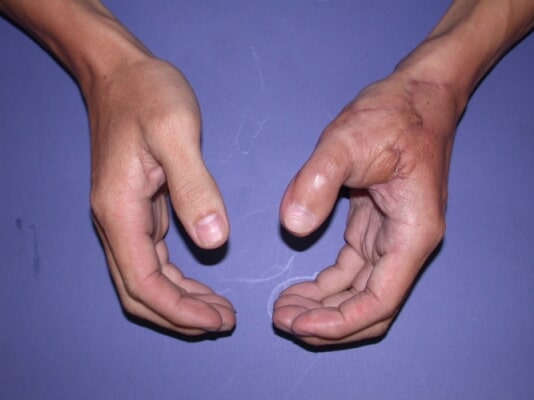- Mon - sat 10.30 - 18:00
- Call Us: 9989077459
- info.aastitv2ab@gmail.com

What is replantation? “Replantation” refers to the surgical reattachment of a finger, hand, or arm that has been completely cut from a person’s body (see Figure 1). The goal of replantation surgery is to give the patient back as much use of the injured area as possible. In some cases, replantation is not possible because the part is too damaged. If the lost part cannot be reattached, a patient may have to use a prosthesis (a device that substitutes for a missing part of the body). In many cases, a prosthesis may give a person without hands or arms the ability to function better than they would without the prosthesis.
Replantation is usually recommended when the replanted part will work at least as well as a prosthesis.Generally, a missing hand or finger would not be replanted knowing that it would not work, be painful, or get in the way of everyday life. Before surgery the doctor, if possible, will explain the procedure and how much use is likely to return following replantation. The patient or family member must decide whether that amount of use justifies the long and difficult operation, time in the hospital, and months or years of rehabilitation.
What kind of recovery can I expect from replantation surgery? The patient has the most important role in the recovery process. Smoking causes poor circulation and may cause loss of blood flow to the replanted part. Allowing the replanted part to hang below heart level may also cause poor circulation. Younger patients have a better chance of their nerves growing back; they may regain more feeling, and may regain more movement in the replanted part. Generally, the further down the arm the injury occurs, the better the return of use of the replanted part to the patient. Patients who have not injured a joint will get more movement back than those with a joint injury. A cleanly cut part usually works better after replantation than one that has been crushed or pulled off. Recovery of use depends on regrowth of two types of nerves: sensory nerves that let you feel, and motor nerves that tell your muscles to move. Nerves grow about an inch per month. The number of inches from the injury to the tip of a finger gives the minimum number of months after which the patient may be able to feel something with that fingertip. The replanted part never regains 100% of its original use, and most doctors consider 60% to 80% of use an excellent result. Cold weather may be uncomfortable and provide reason for frequent complaint even for those with excellent recovery.